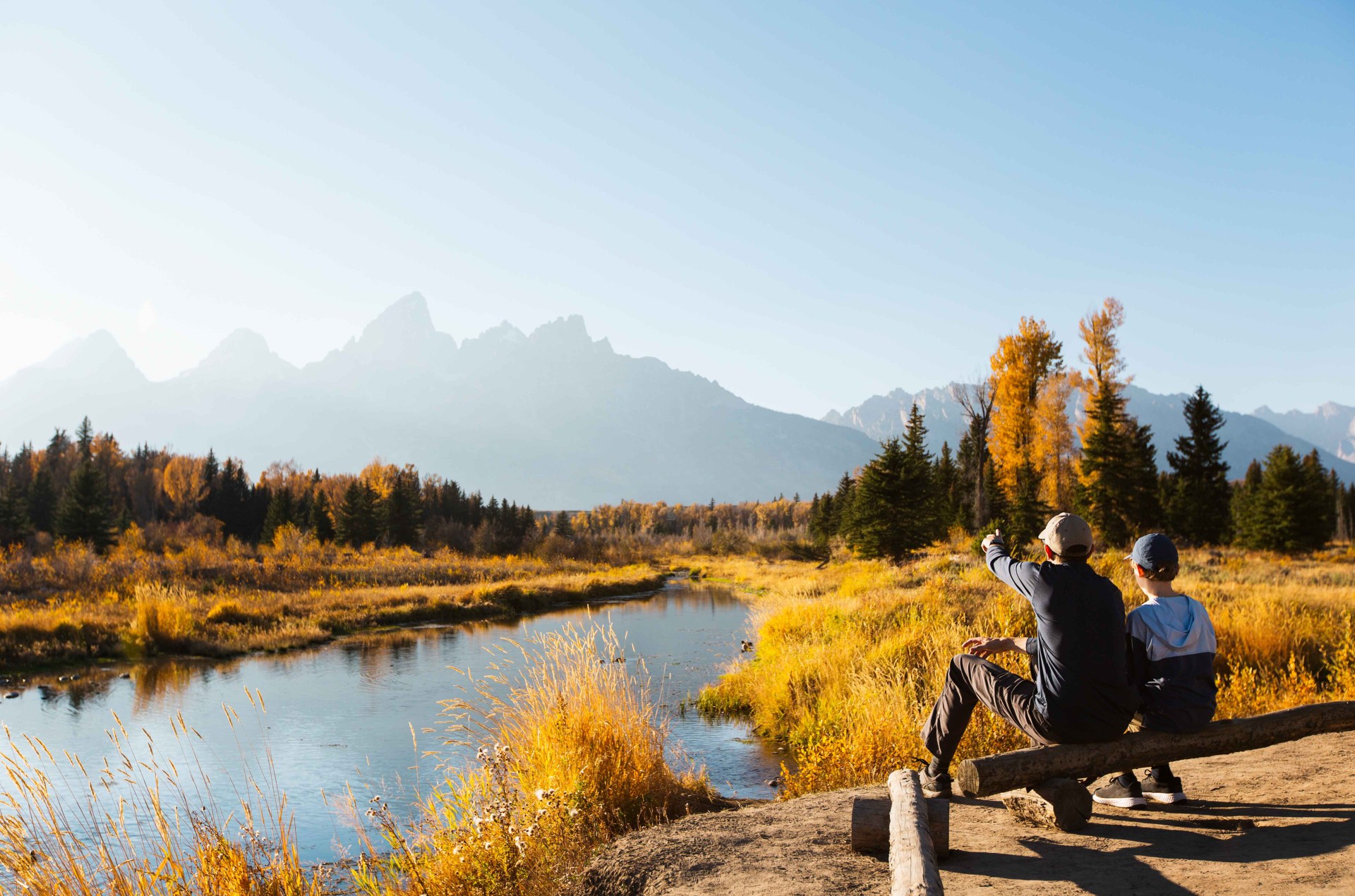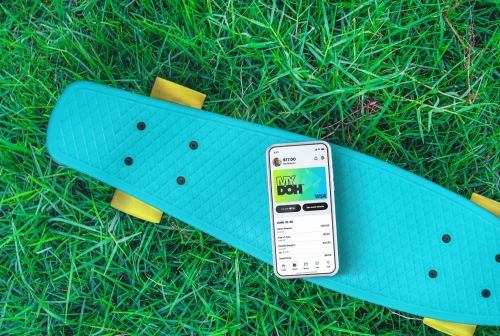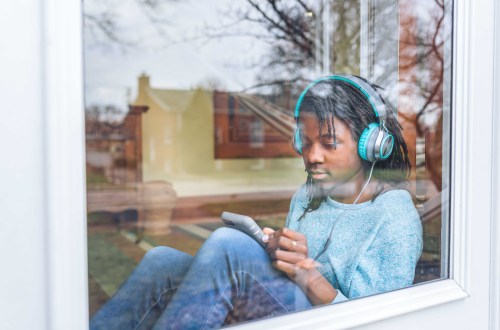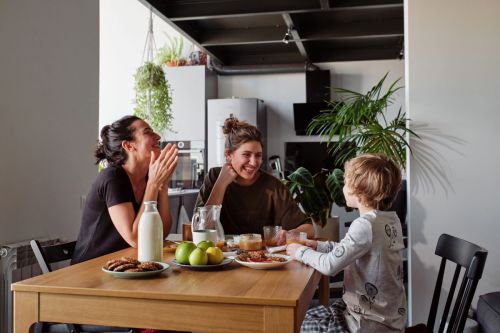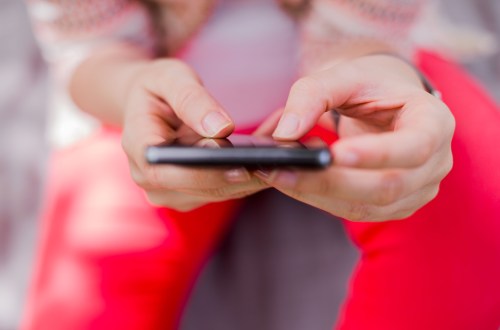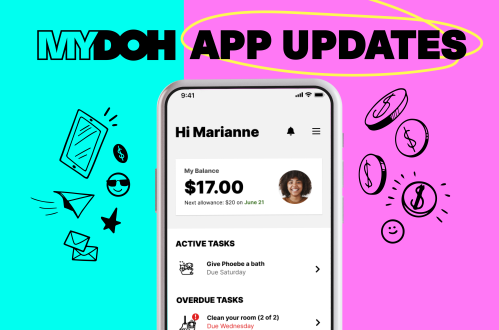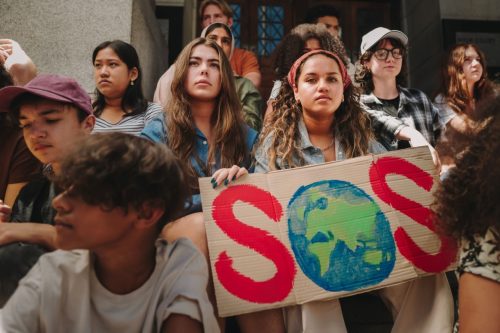Climate change is a daunting subject to cover with anyone, let alone your kids. The complexity of the science, the gravity of the issue, the doomsday-sounding consequences—it’s a lot.
But don’t let that stop you from having open, constructive conversations about global warming with your tweens and teens. They likely have lots of questions and concerns. They may also have climate anxiety, and even anger, around the state of the natural world, where it’s going, and how we got here.
Before you dive into a lengthy family discussion about fuel emissions, carbon footprints, and youth climate activism, it’s a good idea to take stock, identify the key questions to ask, and familiarize yourself with some fundamental global warming details.
What is climate change?
Climate change is a long-term shift in temperatures and weather patterns over a long period of time. Our planet is getting hotter. The average global temperature has risen more than 1°C since the industrial era, and that warming is causing the world’s weather patterns to change irreversibly.
Ice caps are melting, sea levels and ocean acidity are rising, our hurricanes and forest fires are becoming more intense, and so are our droughts and heat waves. It’s not good. Climate change is already impacting everything from wildlife to farming to city life, and as the world continues to warm, the effects, unfortunately, are projected to get significantly worse if we continue the way we’ve been going.
What causes climate change?
In short, greenhouse gases (GHGs) cause climate change—the biggest culprit being carbon dioxide (CO2). CO2 exists naturally in our atmosphere, but since the industrial era, human activities—most notably burning fossil fuels—have released a significant amount of carbon dioxide into the atmosphere.
Though CO2 is naturally absorbed by trees and other plants (read: forests, which, yes, we keep cutting down), and by aquatic environments, we’re producing so much of it that it isn’t being removed fast enough.
So, the GHGs build up in the atmosphere, trapping heat on Earth that would otherwise be released into space. Other gases contribute to this greenhouse gas effect, too, such as methane, nitrous oxide, and fluorinated gases—but CO2 accounts for about two thirds.
Scientists are confident that human activities, such as industrialization, deforestation, and intensive agriculture and farming practices, are responsible for our current climate change.
What can we do about climate change?
The effects of global warming are already in motion, but what we can do is curb the intensity of the inevitable consequences. These changes need to happen on a global scale.
At the 2015 UN Climate Change Conference in Paris, the world committed to cutting emissions enough to keep global temperatures well below 2°C above pre-industrial levels. But then, an in-depth 2018 report by the Intergovernmental Panel on Climate Change (IPCC), compared the projected severity of the consequences at a 2°C warming versus 1.5°C, revealing that we must lower the goal to 1.5°C by 2030 in order to curb some of the most destructive outcomes.
The responsibility is on countries, and their industries, to aggressively reduce their emissions and cut reliance on fossil fuels. Nations around the world (including Sweden, Costa Rica and Nicaragua) are making the switch to renewable energy sources, such as solar and wind, while others (including Argentina, Canada and Chile) are implementing carbon taxes.
Here’s a few things that parents can do about global warming:
- Voting for environmental-forward platforms
- Supporting climate-conscious businesses
- Actively working toward reducing your carbon footprint
- Teaching your kids—the next generation—the importance of sustainability
- Staying on top of new developments, such as research findings and action items from important scientific gatherings, such as the UN Climate Change Conference.
At what age should kids learn about climate change?
Really, it’s up to you. Some experts recommend speaking to your kids about climate change as soon as possible—as early as two or three years old. Others recommend waiting until they ask, especially if they’re younger than eight.
Young children won’t understand the scientific complexities of climate change, so think about simply exposing them to nature as much as possible. Nurture an appreciation for the Earth and the understanding that things grow, and that we can help to take care of them.
Once your kids have the ability to think more abstractly and handle more complex subjects, you can start to really delve into the concept of climate change.
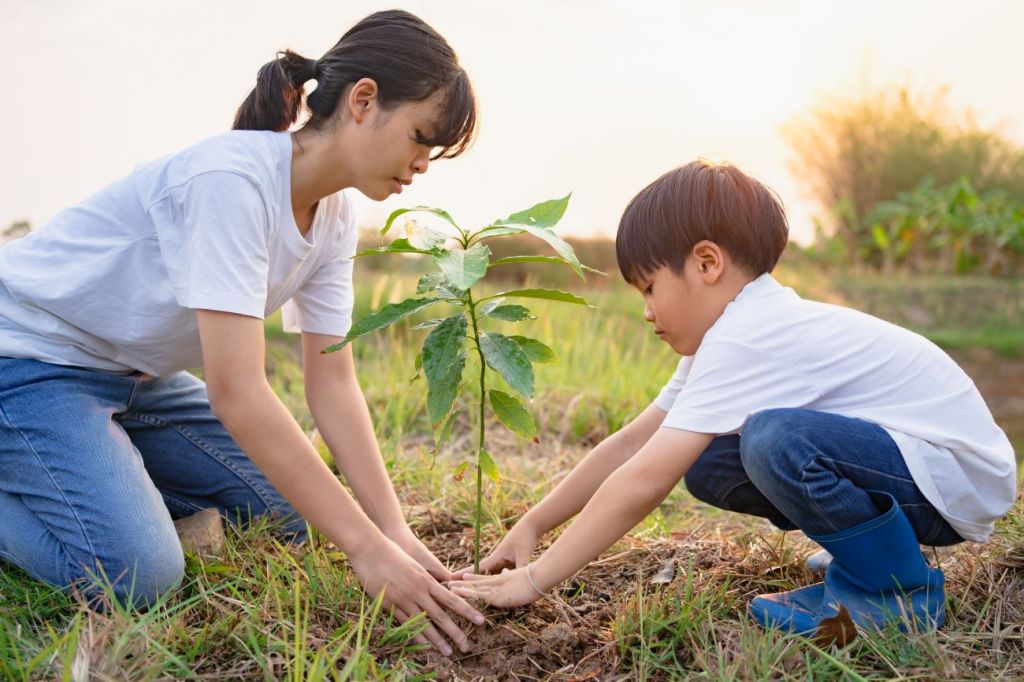
How to explain climate change to a child
School-age kids will have picked up pieces about climate change in class or from the other students. When the subject is first broached at home, listen to their concerns and ask questions to gauge how much they already understand. You can fill in any gaps and can clear up any climate change myths. You can also assess their climate anxiety, and even anger.
Now, how do you actually explain climate change to a child?
- Cover the basics with familiar age-appropriate examples that are easy for them to grasp.
- Don’t sugar-coat the issue—give the facts but be sure to focus on how we’re working toward solving the problem and the environmental strides we’ve made so far.
- Encourage questions and dive into the answers together, using trusted sources.
Thankfully, you won’t have to do all the talking. There are tons of kid- and tween-level resources available. Check out online tools filled with interesting facts about climate change for kids and climate change videos for kids (try Climate Kids, NASA Climate Kids or Kids Against Climate Change). Read books about climate change and watch climate change movies.
In addition, museums, aquariums, nature reserves, and science centres across the country have climate-issue-related exhibits dedicated to teaching all ages.
How do you talk to teenagers about climate change?
Your teen has likely learned about the science of climate change and might be teaching you. They may also be very angry. And stressed. And maybe scared. This means, in some cases, your focus may be on managing those feelings rather than educating. So:
- Be sure to listen to them—let them talk to you about their knowledge, and don’t brush aside their anger or anxiety as teenage angst.
- Acknowledge that they have a reason to be mad and anxious—after all, they may feel as if they’re taking the brunt of the consequences and the responsibility to turn this thing around.
- Try to focus on good news and climate science innovations, from artificial glaciers in the Himalayas to floating wind turbines off the coast of Scotland.
- Share news articles from reputable sources for climate news.
Finally, try to support any life changes they may want to make—a switch to vegetarianism or veganism, for example—or participation in student climate strikes and other youth climate activism. And get ready for them to challenge you on some of your day-to-day, not-so-climate-conscious behaviour. Make sure to keep the discussion open and be willing to compromise.
How do families talk about climate change together?
An easy way to spark that healthy climate change dialogue with the fam is for you to practice climate consciousness at home. As you conserve water, recycle, compost, grow your own vegetables, buy used clothes, and more, you’ll have ample opportunities for talking about the environment and the major contributors to a carbon footprint.
If you’re raising kids of different ages and levels of climate knowledge—who have different attitudes around the issue—the most important thing to do is foster an environment of open discussion, education, and patience.
Don’t avoid the subject if you think one of your kids is too young or if you’re afraid to spark a conflict between siblings. Instead, use language and examples that your little one will understand, and guide family conversations to keep them as constructive as possible.
If you’re raising your kids with someone else, make sure you’re on the same page, both about climate change facts and around lifestyle-related climate change solutions. If one of you is adamant about recycling but the other openly thinks it’s a waste of time, you’ll be giving your kids conflicting messages.
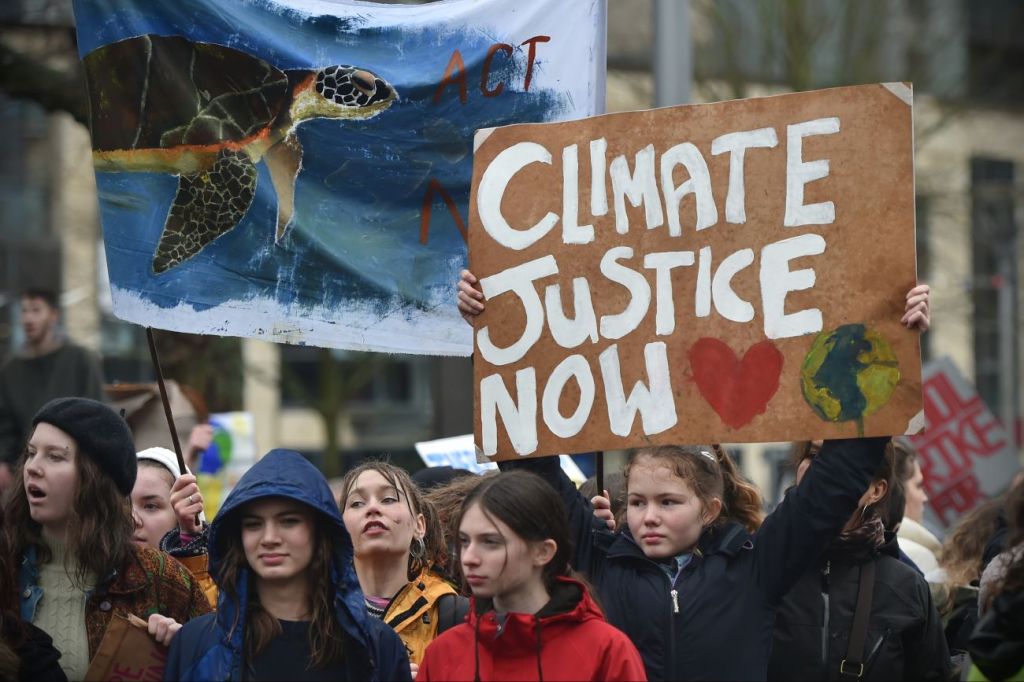
What can kids do to stop climate change?
There are a lot of ways to empower your kids with climate change solutions.
Involve your kids in hands-on climate change activities
For starters, be sure to involve them as much as possible in your family’s pursuit to live more sustainably:
- Plant trees and grow a vegetable garden together.
- Teach them to conserve energy by turning off lights and appliances, putting on a sweater instead of turning up the heat (classic dad move).
- Encourage them to save water.
- Recycle and compost together.
Encourage teens to join climate-friendly initiatives
You can also encourage them to get involved in community projects and join climate-action-for-kids initiatives, participate in youth climate activism, or look into pursuing a green career—maybe in environmental science, renewable energy, or ecology.
Learn more about 10 climate change activists making a difference in Canada
Assign eco-friendly chores for your kids
Using Mydoh’s allowance app, you can reinforce environmentally conscious chores and household tasks such as:
- Sorting the recycling
- Composting
- Hanging laundry to dry
- Washing dishes while conserving water
- Maximizing laundry loads
Through these day-to-day tasks, you can help your kids to take action based on their learnings around conservation. And, more importantly, you’ll be promoting a steady stream of productive, fight-climate-change conversation.
Download the Mydoh app to help your tweens/teens gain real-world experience and manage their spending.
This article offers general information only and is not intended as legal, financial or other professional advice. A professional advisor should be consulted regarding your specific situation. While the information presented is believed to be factual and current, its accuracy is not guaranteed and it should not be regarded as a complete analysis of the subjects discussed. All expressions of opinion reflect the judgment of the author(s) as of the date of publication and are subject to change. No endorsement of any third parties or their advice, opinions, information, products or services is expressly given or implied by Royal Bank of Canada or its affiliates.
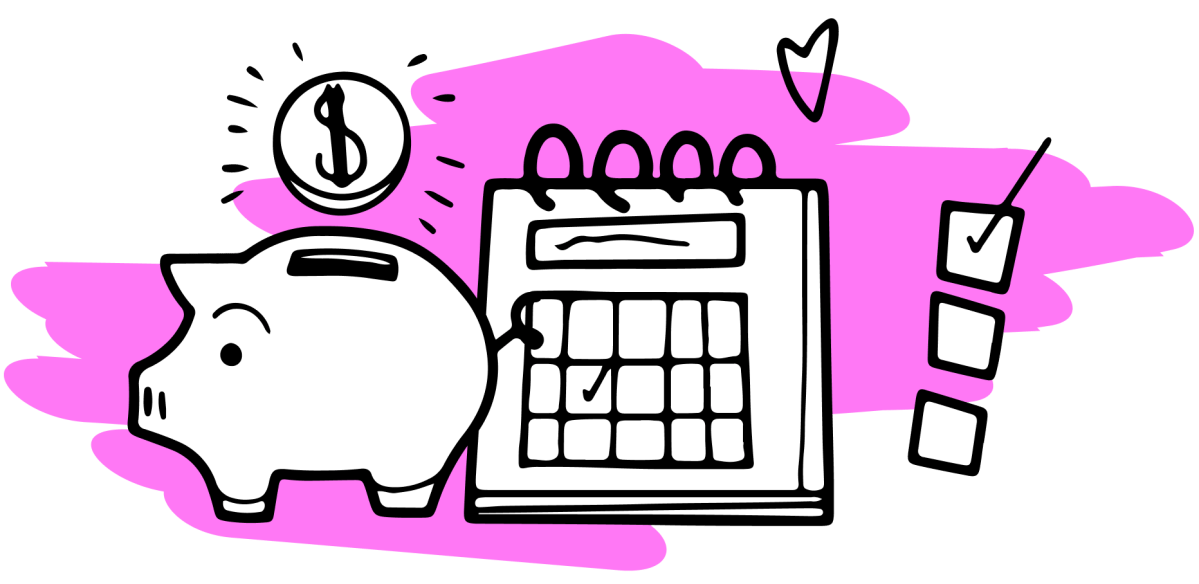
Teach Your Kids How To Earn, Spend & Save Money
with the Mydoh App &
Add up to five kids and two parents on one account.
